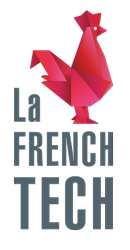The title tag, or “META TITLE”, is one of the fundamentals of natural search engine optimization. Made up of just a few words, it is used by search engines when displaying your web page in search results. It not only influences your positioning, but also your click-through rate.
Not too long, not too short, optimized but not overoptimism, learn how to write the ideal title tag to appear in the first results.
What is a title or meta title tag?
The META TITLE is an HTML tag corresponding to the title of your web page. Always located at the top of the document in the HTML code header (), it is framed by the tags. It is used by search engines to understand the content of your page. It is this same tag that is displayed as the title of your page when it appears in the results of Google or any other search engine.
Please note! The META TITLE should not be confused with the H1 tag. While the H1 tag is visible to visitors directly on the site, the title tag is not.
What is the purpose of the title tag?
The title tag carries a lot of weight in SEO. It is addressed to 3 recipients:
- Google: the search engine retrieves the title of the page in order to identify the targeted query.
- Audience: this tag helps your visitors understand what the page is about.
- Website owner: it enables you to position the right page for the right query.
Be careful not to confuse title tags with h1 tags!
The title is what appears in blue in the Google results. The title is optimised, and even copywritten, for natural referencing. The H1 is a simple title positioned at the top of your article. The title is more succinct and targets a very specific query. The h1 can be longer and more complete. This is an opportunity to use the lexical field of the targeted keyword.
How do you make a good title tag for good SEO?
The function of the title tag is to inform search engines about the theme of the page. It is therefore the very first signal sent to Google when it crawls the page in question. Thanks to this first piece of information, search engines are better able to understand what the page is about and therefore to better evaluate and position the page in the SERPs.
Even though it is obviously not the only criterion taken into account for your positioning, it can still have an influence depending on the expressions and keywords in the title tag. Optimizing the META TITLE is therefore the very first “on page” optimization you need to work on.
Ask a question
If the content of your page lends itself to this and if it seems coherent, don’t hesitate to formulate your title in the form of a question. Google is a search engine and an answer engine! This can make all the difference and guarantee you position 0 or a good place in the PAA (people also ask). You need to respond to a search query: make sure your question is well formulated, because Internet users prefer the results that seem to best answer their question.
How can I optimize my META TITLE?
Because it is aimed at both Internet users and search engines, perfect optimization of the title tag is a subtle compromise between SEO issues and essential attractiveness from a marketing point of view.
How many characters?
In the SERPs, the teaser of any page is limited in length to a certain number of pixels. However, it is generally agreed that this corresponds to around sixty characters.
Beyond this limit, the search engine will itself truncate the title. This can render the title meaningless and reduce your visibility and the number of visitors to your page from Google.
1 page = 1 TITLE tag
The purpose of the title tag is to provide information about the subject of the page on which it is found. As a blog, e-commerce site or shop window site is made up of pages with different content, each of them must have a META TITLE that is logically different.
Inserting keywords
Any META TITLE must contain the keyword of the query you are targeting. So, if we take the example of a shop with an “orange perennial flowers” category, we would logically find the keyword expression “orange perennial flowers” between and .
Attractiveness of your tagline
Today, no search engine is capable of measuring the attractiveness of your tagline.
Beware of over-optimisation
Apart from neglecting the importance of the title tag, the most common mistake is trying to optimise it too much, for example by inserting a large number of keywords or deliberately repeating certain terms.
Whether intentional or not, this over-optimisation is likely to be interpreted by search engines as spam or a desire to manipulate results. Such practices, which run counter to Google’s guidelines, are penalized by the search giant. Over-optimisation of META tags can therefore have the opposite effect to that intended, leading to a loss of visibility.
However, to determine whether it is actually relevant, it uses a number of criteria, including the click-through rate (CTR) and the bounce rate.
SEO training?
Sylvain is here for you
16 years’ expertise in digital marketing

Title tag: what are the mistakes to avoid?
Apart from neglecting the importance of the title tag, the most common mistake is trying to optimize it too much, for example by inserting a large number of keywords or deliberately repeating certain terms.
Whether intentional or not, this over-optimisation is likely to be interpreted by search engines as spam or a desire to manipulate results. Such practices, which run counter to Google’s guidelines, are penalized by the search giant. Over-optimising META tags can therefore have the opposite effect to that intended, leading to a loss of visibility.
Is automation synonymous with dangerous practices?
Black-Hat SEO is often associated with automation, while White-Hat SEO is presented as a technique that is not, implying that automation is necessarily bad for SEO.
In fact, a good SEO who respects the guidelines imposed by Google can automate certain tedious or repetitive tasks. This is the case, for example, for automatic redirections, 404 error detection, internal linking or the integration of visitor requests into a section of the page – essential tasks that can be automated without risking infringing Google guidelines.
It is understood that Black Hat techniques present risks for the medium- and long-term visibility of your site, and today very few companies will offer you this type of service.For example, our seo agency only offers WhiteHat services in correlation with the Google guides.









